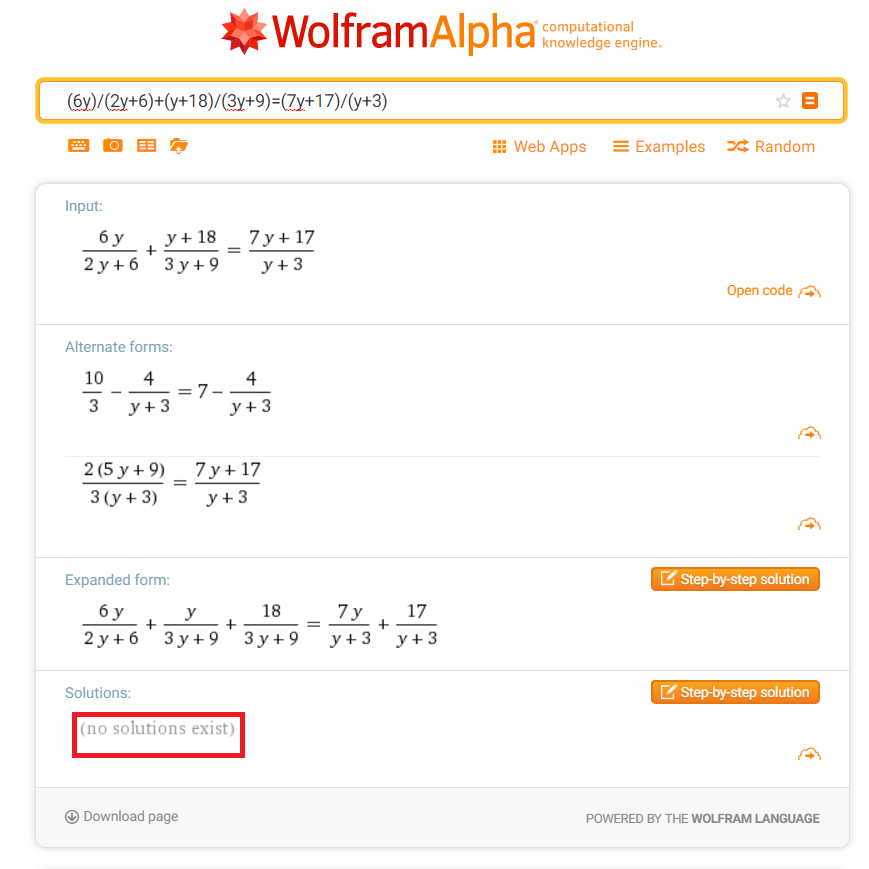#(6y)/(2y+6)+(y+18)/(3y+9)=(7y+17)/(y+3)#
We can rewrite it as:-
#(6y)/[2(y+3)]+(y+18)/[3(y+3)]=(7y+17)/(y+3)#
#=>(9y+y+18)/(3(y+3))=(7y+17)/(y+3)#
Cross multiply;
#=>(10y+18)(y+3) = 3(7y+17) (y+3)#
#=>(10y+18)(y+3)-3(7y+17) (y+3)=0#
Taking #(y+3)# common;
#=>(y+3)(10y+18-21y-51)=0#
#=>(y+3)(-11y-33)=0#
#=>-11*(y+3)*(y+3)=0#
#=> (y+3)^2=0#
#=> y+3 = 0# #=> color(red)(y=-3)#
BUT there is a catch.
We might think that #y=-3# is the solution but try to substitute this value back into the original equation i.e.
#(6y)/(2y+6)+(y+18)/(3y+9)=(7y+17)/(y+3)#
We find that terms in the denominator become zero.
#2*(-3)+6 = -6+6=0#,
#3*(-3)+9=-9+9=0#,
#-3+3 = 0#.
That means the expressions #(6y)/(2y+6), (y+18)/(3y+9), (7y+17)/(y+3)# become undefined at #y=-3# since division by zero is not defined. Hence we cannot say for sure whether the left-hand-side equals the right-hand-side or not. So #y=-3# is not a solution to this equation.
Where did we go wrong?
Remember the step where we cross multiplied #y+3#. Cross multiplication, or in fact any kind of multiplication on both sides of the equation is allowed only when the number(s) being multiplied is/are non-zero. Therefore cross multiplication in that step is only valid if #y+3!=0# or #y!=-3#. I.e. we are cross multiplying on the assumption that #y=-3 # is not a solution and even if it turns out to be a solution after solving the subsequent equations, we are going to neglect it.
#therefore# we neglect #y=-3# and hence, the given equation has no real solution.
Just to be sure, I checked on wolfram.



